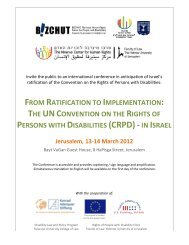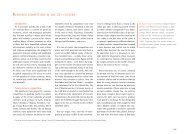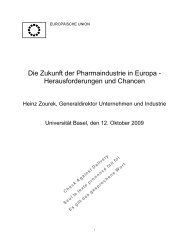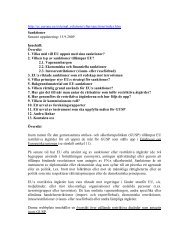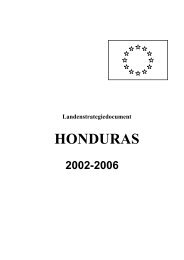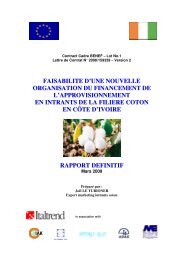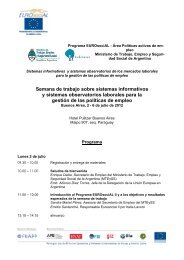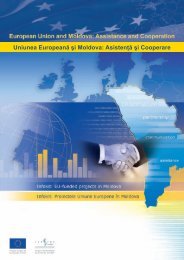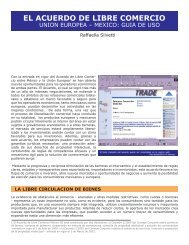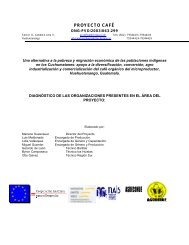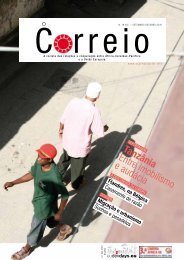Bhutan Country Strategy Paper 2007-2013 - the European External ...
Bhutan Country Strategy Paper 2007-2013 - the European External ...
Bhutan Country Strategy Paper 2007-2013 - the European External ...
Create successful ePaper yourself
Turn your PDF publications into a flip-book with our unique Google optimized e-Paper software.
<strong>Bhutan</strong> is one of <strong>the</strong> countries which benefits from <strong>the</strong> EBA initiative under <strong>the</strong> EU GSP and is<br />
also part of <strong>the</strong> regional accumulation of origin benefit in <strong>the</strong> South Asia grouping comprising of<br />
Bangladesh, <strong>Bhutan</strong>, India, Maldives, Nepal, Pakistan, and Sri Lanka.<br />
FDI<br />
Foreign Direct Investment (FDI), although marginal in <strong>Bhutan</strong>, is mainly attracted by <strong>the</strong> tourism<br />
sector, particularly for <strong>the</strong> financing of new hotels and resorts. <strong>Bhutan</strong> benefits from foreign<br />
grants and soft foreign loans with highly favourable terms which has, despite rising current<br />
account deficits, managed to keep <strong>the</strong> overall external position in surplus. Combined with hard<br />
currency and electricity exports, <strong>the</strong>se inflows have permitted <strong>Bhutan</strong> to accumulate over US$391<br />
million in December 2004, sufficient to cover 18.5 months of <strong>the</strong> country’s imports.<br />
1.3 The Social Situation<br />
<strong>Bhutan</strong> has made considerable development achievements according to <strong>the</strong> Human Development<br />
Index (HDI) over <strong>the</strong> last few years. In <strong>the</strong> global HDI of 2006 <strong>Bhutan</strong> is ranked 135 out of 177<br />
countries. <strong>Bhutan</strong>’s Gross National Income per capita was $ 807 in 2005. Although <strong>Bhutan</strong> today<br />
is ranked among <strong>the</strong> poorest countries in terms of its per capita Gross National Product (GNP),<br />
this statistic understates its living standard as <strong>the</strong> majority of <strong>the</strong> country's population is involved<br />
in subsistence agricultural production and barter transactions, which are not represented in GNP<br />
calculations. <strong>Bhutan</strong>’s aim is to graduate from LDC status as soon as possible.<br />
The second MDG Report 2005 for <strong>Bhutan</strong> reveals that <strong>the</strong> country has made significant and<br />
sustained progress in achieving <strong>the</strong> MDG targets and is potentially on track for most targets,<br />
ahead of all o<strong>the</strong>r countries in <strong>the</strong> region. Never<strong>the</strong>less, <strong>the</strong> 2004 Poverty Assessment indicated<br />
that <strong>the</strong> national poverty rate is 32 per cent while in rural <strong>Bhutan</strong> this figure is as high as 38 per<br />
cent. Moreover, <strong>the</strong> Assessment shows that income inequalities are growing in <strong>Bhutan</strong>. The<br />
country’s Gini-coefficient is relatively high at 0.416 at <strong>the</strong> national level and <strong>the</strong> richest 20 per cent<br />
consume 8 times more than <strong>the</strong> poorest 20 per cent of <strong>the</strong> population.<br />
Gender<br />
Women are treated equal to men and <strong>the</strong> law protects <strong>the</strong> rights of women in many ways. In rural<br />
areas <strong>the</strong> ownership pattern shows a 60 - 40 female - male ratio. <strong>Bhutan</strong> fur<strong>the</strong>r has affirmed its<br />
commitment to <strong>the</strong> principles of gender equality by ratifying <strong>the</strong> Convention on <strong>the</strong> Elimination<br />
of All Forms of Discrimination Against Women (CEDAW) in 1981 and adopting numerous<br />
follow-up measures to reduce gender inequalities. Over <strong>the</strong> years, <strong>the</strong>re has been a tremendous<br />
increase in female school enrolment rates. Currently, this rate is increasing even faster than boys’<br />
enrolment. In 2004, <strong>the</strong> ratio of girls to boys in primary, secondary, and tertiary education has<br />
increased to 95%, 96% and 53% respectively. The number of women in <strong>the</strong> civil service has<br />
increased over <strong>the</strong> years and at <strong>the</strong> moment women constitute around 23% of <strong>the</strong> total civil<br />
service employees.<br />
Health<br />
The percentage of <strong>the</strong> rural population with access to sanitation and safe drinking water stands at<br />
92.6% and 84% respectively (2003), which means that <strong>Bhutan</strong> has already achieved MDG 7<br />
(Target 10), on halving <strong>the</strong> proportion of people without access to safe drinking water and<br />
sanitation. Around 90% of <strong>the</strong> population has access to proper health facilities. As of 2005 <strong>the</strong>re<br />
are 29 hospitals, 176 basic health units and 485 dispensaries and outreach clinics scattered across<br />
6




